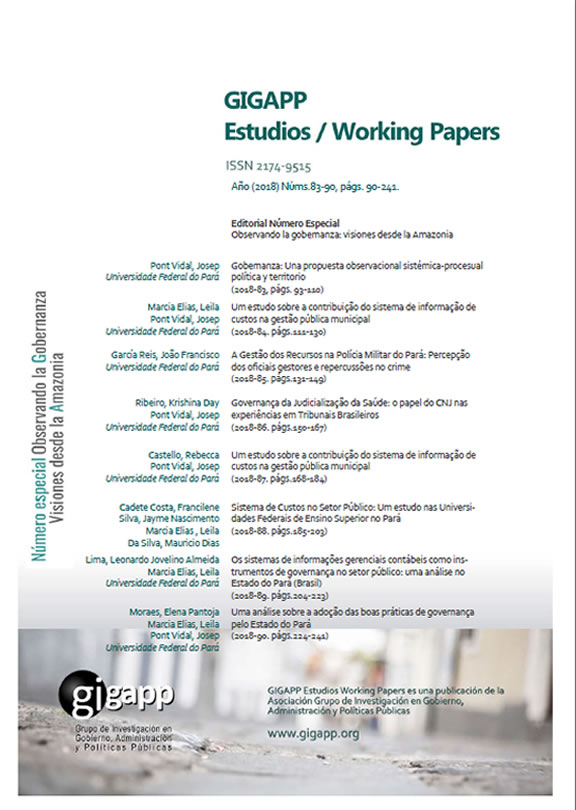Sistema de Costos en el Sector Público
Un estudio en las Universidades Federales de Enseñanza Superior en Pará
Resumen
El presente estudio tiene por objetivo verificar la adopción del Sistema de Costos en las Universidades Federales ubicadas en la ciudad de Belém do Pará que poseen el mayor indicador institucional, a través del estudio de caso representado por las universidades: Universidad Federal de Pará (UFPA) y Universidad Federal Rural de la Amazonia (UFRA). Se caracterizó como un estudio exploratorio, con abordaje cualitativo, realizado por medio de investigación bibliográfica, documental y levantamiento de campo con los sectores Administrativo-Financiero de la UFPA y UFRA. Los resultados analizados de las IES en estudio, aunque disponen de estructuras financieras y contables, no adoptan sistemas específicos para la medición de costos, y por lo tanto no prevén los costos parciales para mantener sus unidades en funcionamiento. Por lo tanto, se considera que la ausencia de la implementación del Sistema de Costos dificulta la toma de decisión y calidad de los gastos, por lo que se propone que las entidades piensen como prioridad el proceso de implantación.
Descargas
Derechos de autor 2019 Francilene Cadete Costa, Jayme Nascimento Silva, Leila Marcia Elias, Mauricio Dias Da Silva

Esta obra está bajo licencia internacional Creative Commons Reconocimiento-NoComercial-CompartirIgual 4.0.
Aquellos autores/as que tengan publicaciones con esta revista, aceptan los términos siguientes:
a. Los autores/as conservarán sus derechos de autor y garantizarán a la revista el derecho de primera publicación de su obra, el cuál estará simultáneamente sujeto a la Licencia de reconocimiento de Creative Commons Attribution-NonCommercial-ShareAlike 4.0 International (CC BY-NC-SA 4.0) que permite a terceros compartir la obra siempre que se indique su autor y su primera publicación esta revista.
Con esta licencia de acceso abierto, los lectores (usuarios) pueden:
- Compartir — copiar y redistribuir el material en cualquier medio o formato
- Adaptar — remezclar, transformar y construir a partir del material
Bajo los siguientes términos:
-
Atribución — usarios deberán dar crédito de manera adecuada, brindar un enlace a la licencia, e indicar si se han realizado cambios. Puede hacerlo en cualquier forma razonable, pero no de forma tal que sugiera que usted o su uso tienen el apoyo de la licenciante.
-
NoComercial — usuarios no puede hacer uso del material con propósitos comerciales.
-
CompartirIgual — Si remezcla, transforma o crea a partir del material, usuarios deben distribuir su contribución bajo la misma licencia del original.
-
Sin restricciones adicionales: los usuarios no pueden aplicar términos legales o medidas tecnológicas que restrinjan legalmente a otros de hacer cualquier cosa que permita la licencia.
b. Los autores/as podrán adoptar otros acuerdos de licencia no exclusiva de distribución de la versión de la obra publicada (p. ej.: depositarla en un archivo telemático institucional o publicarla en un volumen monográfico) siempre que se indique la publicación inicial en esta revista
c. Se permite y recomienda a los autores/as difundir su obra a través de Internet (p. ej.: en archivos telemáticos institucionales o en su página web) antes y durante el proceso de envío, lo cual puede producir intercambios interesantes y aumentar las citas de la obra publicada. (Véase El efecto del acceso abierto).



